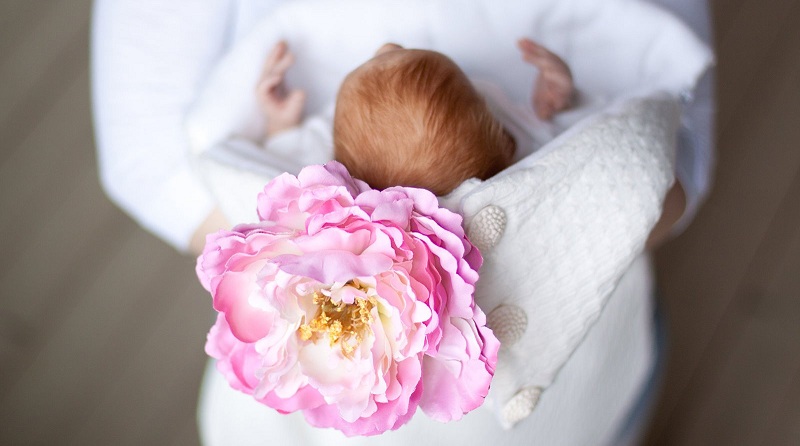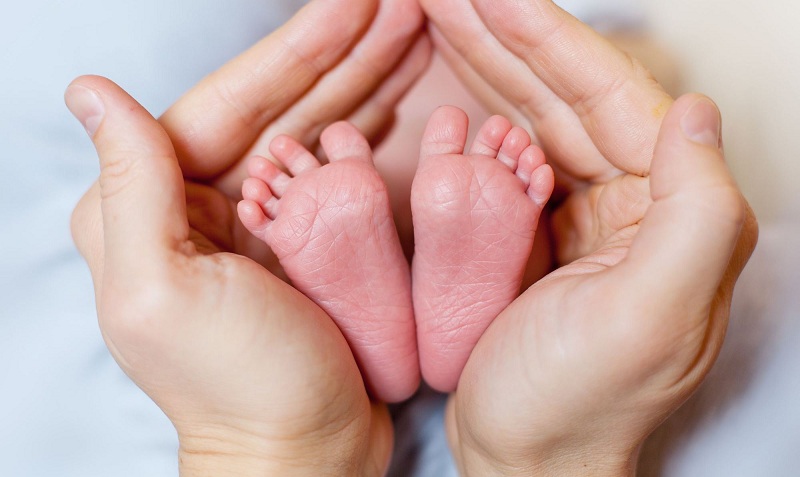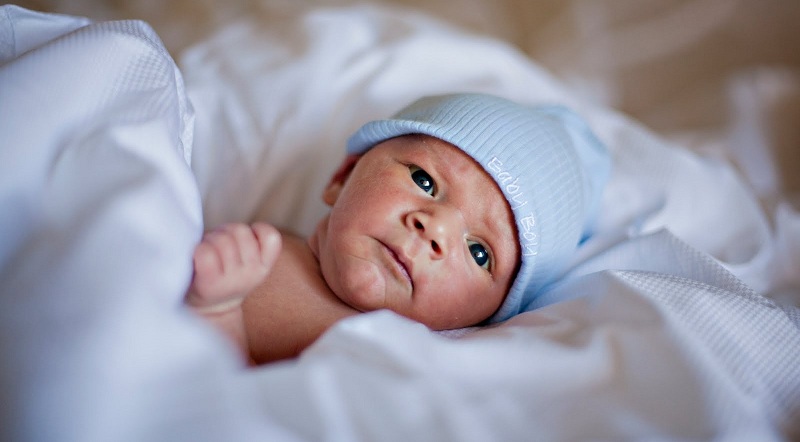The birth of a child is a special sacrament that binds forever an unbreakable thread between a mother and a newborn child. Some women in labor prefer to completely trust the doctors, others – rely on the naturalness of the process of birth, and others – find the optimal balance between the two extremes. Anyway, all the features of the course of childbirth completely depend on the will of the future mother, with the exception, perhaps, of special medical indications and threat to life. It is thanks to this that the traditions of natural lotus families have recently been revived, during which the baby is not cut the umbilical cord, allowing this process to end harmoniously and naturally. What are the advantages and disadvantages of lotus childbirth for the infant and young mother, How does the birth process take place and what kind of care does the placenta require before its mummification? Let’s look at these and many other questions in more detail.

Origin of tradition
Despite the growing popularity, many women in labor still have not heard anything about lotus childbirth, they do not know what it is and what it is necessary for. Such a tradition of birth began on the island of Bali and gradually leaked onto the territory of the rest of the world. A feature of lotus childbirth is the preservation of the integrity of the umbilical cord of the infant, which connects it to the placenta, up to its independent drying. The generic process received such a non-trivial name because in the Balinese culture of a newborn it is customary to compare it with a lotus flower, where the child himself is a bud, the umbilical cord is a stem, and the last is rhizome. However, there is another opinion: in order to muffle the smell, the women wrapped the placenta in the lotus petals until it rejected itself.

The theory of lotus birth is not only based on a traditional basis – the technique has received quite a scientific justification. Choosing this method of delivery, the woman considers the baby seat as a separate organ of the newborn, cutting off which, immediately after the first cry, deprives the crumbs of the vital. However, this opinion has a logical and well-grounded explanation: during the passage through the birth canal, the baby’s body is subjected to strong pressure, which causes a significant outflow of blood to the placenta. If the umbilical cord cutting takes place immediately after the first breath, these losses remain irrecoverable, and the child’s body has to make a lot of effort to provide for all at once. If the placenta remains unseparated, the blood, and with it the oxygen,
Kinds of lotus childbirth
Modern adaptation to existing medical realities has divided the concept of lotus families into 2 types:
- Traditional lotus birth. This process completely eliminates the artificial cutting of the umbilical cord. To save the placenta up to its independent fall, it is treated with a special solution, poured with salt, rewound and put into a special container, which is in close proximity to the baby (as far as the umbilical cord length allows). Usually, the baby seat departs 2-7 days after birth, and all this time the child must be under the strict supervision of doctors to eliminate the possibility of infection and inflammation.Not all domestic neonatologists and obstetricians and gynecologists are favorably or at least tolerantly treated with this method of delivery, and the official protocol does not state anything about the conservation of the afterbirth, which means that finding a maternity hospital where they will agree to keep the last one will be quite difficult, therefore most of these genera are at home. However, nothing is impossible: with proper perseverance and self-righteousness, you can find specialists who share traditional Balinese views.

- Adapted lotus labor. It will be much easier to implement such a scenario of birth than the traditional one – it is enough to warn the obstetricians taking the birth of your desire in advance. Such a process is not much different from the usual, but it allows the child to get the maximum benefit, eliminating the possible risks of lotus birth. At such births, the umbilical cord is cut not immediately after the baby’s first cry, but after full pulsation (usually, it takes up to 5 minutes), or as a last resort after the afterbirth is expelled from the uterus.
Theoretically, this method should work everywhere – the official birth protocol includes cutting the umbilical cord at least 1 minute after birth. But if you still want to be sure that your desire will be taken into account, it is worthwhile to stipulate this nuance in advance – many experts ignore the recommendations to make the birth more short-term, but none of them will refuse to wait a bit to comply with the wish of the mother.

Advantages and disadvantages of the Balinese tradition
Reviews of lotus birth usually have a diametrically opposite context: some women praise this technique, describing it as the most natural and consistent, others are extremely negative, considering delivery only from a medical point of view. Both are right in their own way – the method has both advantages and disadvantages. Significant advantages of lotus birth include:
- smooth “inclusion” of all vital organs and body systems of the newborn;
- a gradual and harmonious transition of the crumbs from one habitat to another, less comfortable;
- rapid recovery of blood volume due to blood contained in the placenta, which, moreover, is enriched with oxygen and nutrients;
- intake of hormones and stem cells through the umbilical cord;
- a more active process of removing the amniotic fluid and other fluids from the respiratory system, which stimulates albumin protein;
- prevention of low hemoglobin, turning into anemia;
- an absence of umbilical wound;
- neatly shaped navel.

At the same time, the lotus birth has a number of rather significant shortcomings that should be taken into account when deciding on the observance of traditions:
- To avoid such consequences of lotus birth is unrealistic – during natural processes occurring in the cells of the placenta after its expulsion, the bilirubin level in the baby’s blood will increase, which will invariably lead to an increased load on the liver and the appearance of pathological jaundice.
- High risk of intoxication. During pregnancy, the placenta filters out many toxic substances that can harm the fetus. If for a long time not to separate it from the baby after birth, the probability of transition of all filtered compounds into its circulatory system increases, which can cause intoxication.
- Disadvantages associated with the care of the afterbirth. To prevent the natural processes of damage to the children’s place, it should be carefully and regularly treated with a special solution and stored in accordance with the requirements. Only in this way you can wait for the mummification of the placenta and the subsequent drying of the umbilical cord without harming the newborn.
All of these drawbacks relate exclusively to the classic lotus birth – a modern version in which the umbilical cord maintains integrity for 5-15 minutes, is devoid of such minuses.

Contraindications for lotus labor
Despite significant advantages, lotus childbirth is not always possible, even with the strong desire of the mother to carry out the process most naturally. To avoid serious complications, an instant umbilical cord cut is necessary in the following cases:
- rhesus-conflict of mother and fetus;
- double and more entanglement of the child in the womb;
- Weakness, prematurity, low weight of the child, requiring resuscitation.
In these cases, the lotus birth can be dangerous to the life of the infant, so it will have to be abandoned.

Proper care of the placenta
If you still decide to lotus childbirth, you should carefully monitor the condition of the placenta, to avoid its damage and decay. Immediately after the expulsion from the uterus, it is necessary to thoroughly rinse under running water, treat with saline solution and sprinkle with coarse salt.
Tip! It is desirable that the salt for powders be sterilized beforehand or at least calcined – this is how you minimize the risk of infection.
After that, the latter is wrapped in a cotton napkin and placed in a breathable container in which it is stored until complete mummification. All these activities are usually carried out by the medical staff since the young mother at this time recuperates after childbirth and is not allowed to care for the newborn, but further hygiene procedures are entirely on the mother’s part.

Under the influence of room temperature, the placenta constantly leaks, so parents have to carefully monitor its condition. At least twice a day, you must rinse the place with running water, sprinkle with salt and change the cotton napkin to a new one. If it began to produce an unpleasant odor, you can add a few drops of tea tree essential oil to the salt – it has antiseptic properties and therefore contributes to additional disinfection. At home, the tradition of lotus childbirth, the island of Bali, later sprinkled with flower petals, fragrant leaves and seeds of plants with antimicrobial action. However, in the domestic latitudes such an option is not excluded, however, it is better to try to keep at least relative sterility – this can reduce the likelihood of negative consequences for the crumbs.

When deciding on lotus childbirth, one should not only take into account one’s own desire to go through the birth process as naturally as possible but also adequately assess one’s own condition, child’s readiness and possible risks. Anyway, the feasibility of maintaining the afterbirth should be considered individually by a team of doctors taking the newborn: by the attending physician, obstetrician-gynecologist and neonatologist. Only in this way can the probability of negative consequences be minimized.

